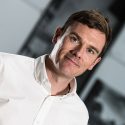Now in its ninth year, KA Connect has become a major knowledge management event for the AEC industry. The theme this year was building a learning organisation. The majority of speakers were from the US, with Nick Milton of Knoco and Andrew Trickett of Arup from the UK. Similarly, most of the 250 attendees were American, drawn from leading architecture and engineering firms with the likes of SMMA, Ayers Saint Gross, DLR Group, RATIO, Turner Fleischer, Bergmeyer, Shepley Bullfinch, BWBR, DOWL and Stantec represented.
Knowledge as an asset
As Nick Milton set out, “learning from others is difficult”. Why is it that despite knowing the benefits of knowledge sharing, we still desire to make our own mistakes? Perhaps, as Nick put it, “the brain is wired for short cuts and heuristics” or “starting with a fresh sheet of paper is just easier”.

Given this context, it was interesting to see so many organisations in a similar position to us, searching for ideas to improve learning. As Arie de Geus, the former head of Shell Oil’s strategic planning group and author of The Living Company, said, “the ability to learn faster than competitors may be the only sustainable competitive advantage”. Clearly this doesn’t happen by accident, we need to set the conditions. To begin, we might consider knowledge as a corporate asset and link it through strategy to our corporate objectives. Not only would this prioritise its importance, but we can begin to measure its value to the business.
Creating curiosity
Most attendees saw their organisations as level one in lesson management, namely ad hoc, reactive and for information only. Here lessons are either lost or not acted on and the tendency to focus on collecting information is evidently not enough. A scant few recognised themselves as level two, where a systematic and quality driven lessons process leads to organisational change. At level three lessons hunting, as opposed to gathering, demands a proactive approach. Lessons are objectives rather than outputs.
Developing a proactive learning culture enabled by people, process, technology and governance clearly takes time. Consequently, quick wins are important. Creating curiosity by stimulating a pull for knowledge will ensure that demand leads supply. At the outset of a project, and at appropriate junctures, questions such as, “who do we need to talk to?” and “which projects can we learn from?” should become routine. The my project is different mantra should be challenged, instead we should emphasise and actively seek correlations as a means to share knowledge and strengthen our learning culture.

Learning from others
The approaches to learning adopted in the United States AEC community are not unlike our own. Many organisations have established corporate universities or academies, CPD programmes, communities of practice, subject matter experts and knowledge champions, as well as the technological means to actively share learning and knowledge. Stories about the willingness to change and to give it a go were common as the basis for innovation.
At the leading edge are the likes of Boulder Associates trying to adopt LEAN principles in the delivery of knowledge, Shepley Bullfinch’s IT innovation hub and use of virtual reality in both the design and client engagement processes, Turner Fleishman’s, Visionarium, to support learning as a strategic priority, and BWBR’s “Fail it Forward” or F_15 series of video based experiential lessons learned conversations. As Bill Gates put it, “it’s fine to celebrate success but better to heed the lessons of failure”.
Andrew Trickett of Arup’s rail division stressed the importance of persistent engagement in the learning process by conducting project knowledge reviews every 3 months, as well as delivering on actions to generate stakeholder trust and interaction.
Opportunities for Ryder
Building a proactive learning system is the goal but it can’t be done in isolation. It requires a knowledge strategy derived from and linked to Everything architecture. In the interim, encouraging curiosity at all levels of the business will begin to generate the necessary demand for knowledge. The lessons learned task and finish group has made a start by providing a series of recommendations to our leadership forum to improve the way we capture and share information. These include evolving current project management processes as well as adapting technology to enable greater collaboration across the practice. Everyone has a part to play. The challenge that lies ahead requires strong leadership and active participation from across the practice to identify opportunities for improvement.
